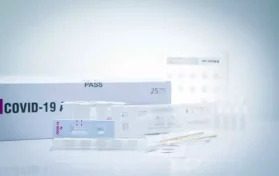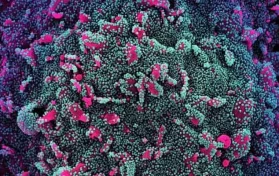
A significant change in the isolation recommendations for those with COVID-19 has cut this time period in half.
The U.S. Centers for Disease Control and Prevention (CDC) changed the isolation restrictions for asymptomatic patients from 10 days to five days in an announcement on Monday. According to the CDC, the change in the isolation recommendations comes as emerging science demonstrates that most people with the virus are the most infectious in the two days prior to the development of symptoms and three days following this development.
The decision comes as the nation continues to deal with a surge in confirmed cases as the Omicron variant spreads like wildfire. The latest data suggests that this new variant is more contagious, however, it causes milder symptoms when compared to previous strains of the virus. While the symptoms may be less severe, the virus has the potential to quickly overwhelm the hospital systems because of its virulence.
According to CDC Director Rochelle Walensky, the U.S. is forecast to see even more cases in the coming weeks. Because most of these cases will be less severe in nature, Walensky said that the agency wants to ensure that life can continue as normal as possible. The director said, “We want to make sure there is a mechanism by which we can safely continue to keep society functioning while following the science.”
The change in the isolation recommendations comes just days after the CDC cut back the requirements for healthcare workers that have tested positive. Previous recommendations had these workers out of work for 10 days following a positive diagnosis. The new rules request that workers only stay out for seven days if they can provide a negative Covid-19 test and are no longer symptomatic. This isolation can be further reduced to just five days if the hospital is experiencing staff shortages and in need of workers.
What do you need to know about the new guidelines? It is important to note that the new recommendations do not apply to people who are still showing symptoms. Symptomatic individuals need to stay home until they feel better. The isolation period begins the day that you test positive.
The positive individual needs to go into isolation for five days, avoiding contact with other people even in the same household. This person can come out of isolation after five days if they have no symptoms. While they can return to regular activities, they must wear a mask for at least five more days. It is recommended to wear this mask even when at home if others are present.
There are also new quarantine rules relating to those who did not test positive but were in close contact with those who did. This quarantine clock begins the day the contact finds out they have been exposed. Past rules recommended that those who were not fully vaccinated stay home for at least 10 days after close contact. The new recommendations say that only those who have the booster can skip quarantine. However, they still need to wear masks when around others.
This is a big shift from the previous rules that said that those who were fully vaccinated, regardless of booster status, did not have to quarantine after a close contact has been identified.





